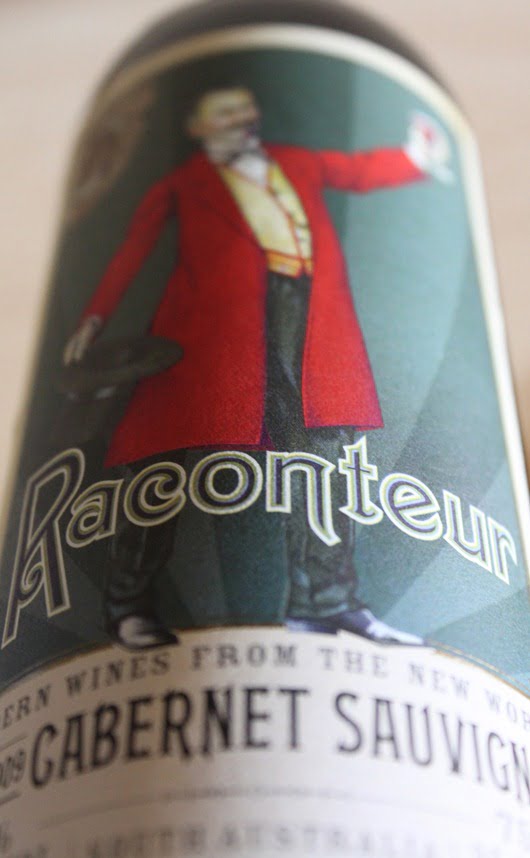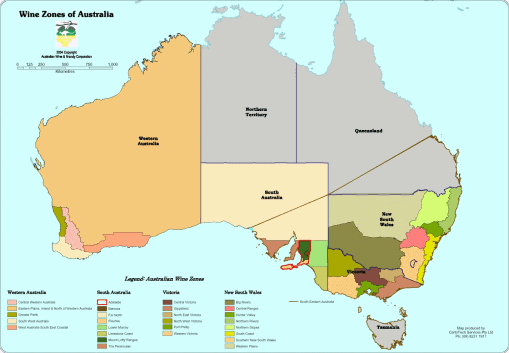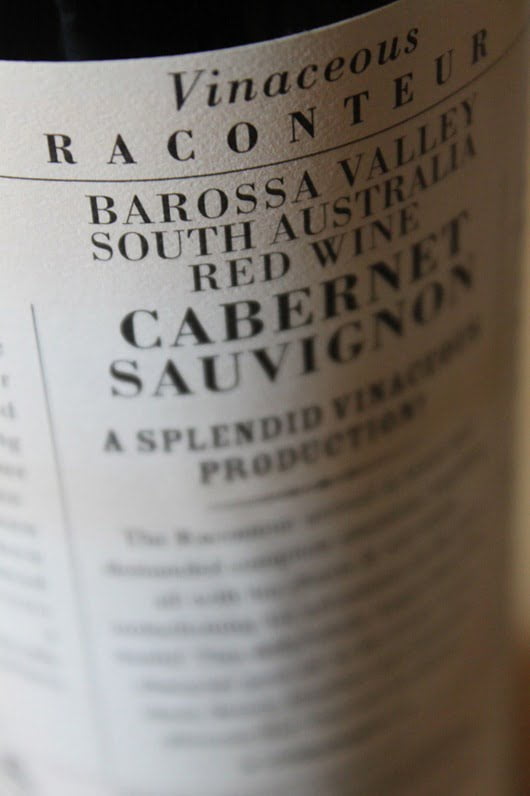Raconteur Cabernet, South Australia. A Wine by Vinaceous.
August 19, 2011Grape
100% Cabernet Sauvignon
Facts
Vinaceous is a fairly new Australian brand which has fairly recently started gaining some traction on the US market, so I thought their Raconteur Cab was worth reviewing.
Name development and design behind Vinaceous apparently took 2 years of development, and they have a beautiful website, so make sure you check it out.
The Cabernet Sauvignon grape was never discovered growing wild in nature. It’s actually a hybrid of Cabernet Franc and Sauvignon Blanc. The wine nerds at UC Davis are credited with this discovery.
Vinaceous is a joint venture between Australian’s Michael Kerrigan and Nick Stacy.
Michael Kerrigan spent twelve years as the winemaker at Howard Park and Madfish Wines in Western Australia, after studying at Roseworthy College in South Australia, the top wine education school in Australia. Michael is now the head winemaker for the Vinaceous brand.
Nick Stacy’s involvement with wine apparently began with a memorable glass of Western Australian Cabernet Sauvignon, given to him by his father at a barbeque when he was only 14. Nick is the brains behind the sales and marketing of Vinaceous. NB: I’m friends with Nick Stacy on The Face Book; and I do have to say, he’s quite bonkers.
Vinaceous currently makes 6 different wines, all with similar elaborate labels to the Raconteur: Divine Light (Verdelho), Red Right Hand (Shiraz, Grenache, Tempranillo blend), Snake Charmer (Shiraz), and the newest labels Salome (Rose Tempranillo) and Sirenya (Pinot Grigio). I believe they also have a Chardonnay and a Sparkler on the way…
Place (click on map for larger view)
The first vines planted in Australia arrived with Europeans in 1788. As it happens, in the 1800’s a vine disease called Phylloxera [Fill-lock-seh-rah] wiped out most of the vines in Europe. Therefore Australia has some of the oldest original vines in the world, some of which are more than 100 years old.
Australians are one of the English speaking world’s largest wine markets, consuming 21 liters each annually. Crikey!
Shiraz and Cabernet vines in Southern Australia yield notoriously small grapes. Due to the warm climate, the vine tries to preserve its moisture, and therefore you get more skin than juice. This will give way to a wine that is packed full of flavor and raw power (as the majority of flavor is in the skins of grapes).
About two million bottles of wine leave Australia every day heading for 111 international markets – about 60 per cent of their wine production. Australia is the fourth largest exporter of wine in the world, but only the 6th largest producer after France, Italy, Spain, Argentina and the US.
Taste
Super concentrated on the nose! Cassis, black fruits, and baking spices. Plummy and rich, showing blackcurrant, dark chocolate, coffee, and a hint of fig. Big tannins and very chewy! Give this one time to open up before serving, would also probably reward those who choose to lie it down for a few years. Very impressive, and beats Australian wines I’ve tasted at twice the price.
Food Pairing
Duck, roast lamb, figs, black fruit reductions, veal, and game.













